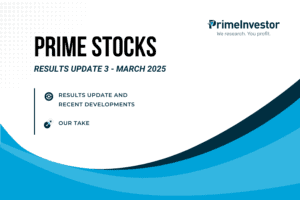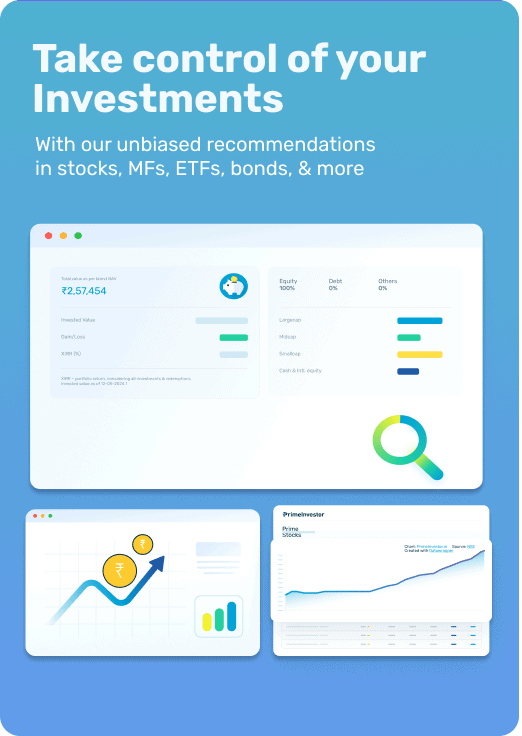Global stock markets have rallied furiously in the past few weeks on hopes that Covid may be vanquished by a vaccine, with Russia claiming success with its Sputnik V, the UK clearing Pfizer’s vaccine and three other vaccines entering late stage clinical trials. A few high frequency indicators from around the world on manufacturing and home sales have also raised expectations for economic activity to normalise quickly post-Covid.

These developments have led to a sudden waning of global investor interest in gold, sought after as a safe haven. Global gold prices, after hitting a lifetime high of $2067/troy ounce in early August have slumped 12% to $1822 by December 3. Indian gold prices at Mumbai, after soaring to Rs 58015 per 10 grams during the same period have cooled off 13% to Rs 50850 now. Gold ETFs and open-end gold funds investing in them, have therefore seen their NAVs drop accordingly. Gold ETFs have seen 14-15% declines in market prices.
We believe this correction offers a good opportunity for Indian investors to accumulate gold. In our previous articles, we had explained why investors need to allocate upto 10% of their portfolio to the precious metal, as portfolio insurance. (Read about our gold outlook here and what to expect from gold here)
Why own gold at all?
The rationale for Indian investors to own gold is threefold:
# 1 A rolling return analysis of Indian gold prices since January 1990 shows that gold for Indian investors has averaged a 9-10% returns for holding periods of 3, 5 and 10 years. This return profile makes a case for having an allocation to gold.
#2 Despite these averages, gold often does nothing for long periods of time. The rolling return analysis shows that with 1, 3 and 5-year holding periods gold has delivered losses or sub-par returns (below 5 %) about 35% of the time. This tendency to remain dormant argues for not holding too much gold in your portfolio. Gold cannot replace wealth-generating assets like equities or even bonds which offer consistent compounding from earnings or interest.
# 3 When gold does perform, it surprises you with sharp and very profitable rallies. These rallies, going by history, have usually occurred during global crises- oil price shocks, runaway inflation, geopolitical tensions (the Gulf War) or financial market turmoil (global financial crisis). Because gold carries a low to negative correlation with both bonds and stocks and performs when they lag, it cushions your portfolio returns during crises.
In India, gold performs a dual role as portfolio insurance. Apart from soaring when the stock markets melt down, gold delivers positive returns from Rupee depreciation too. In India, economic crises usually see foreign investors stampeding out and triggering sharp bouts of Rupee depreciation against the dollar. Such depreciation adds directly to your returns as a gold investor. In the last twenty years, Rupee depreciation against the dollar has added about 3 percentage points annually to returns of Indian gold investors.
The following table highlights how gold ETFs in India fared during bear markets for stocks like 2008 and 2011.
Why now?
Okay, accepting that an allocation to gold does make sense for long-term investors in India, why is now a good time to accumulate it? The reasons are fourfold.
# 1 Overheated equities
Indian stock market valuations were a little too warm for comfort even before Covid, but they’ve turned super-heated after the rally. The Nifty50 PE multiple was at 29 times standalone earnings and about 26 times consolidated earnings in December 2019, already higher than the long-term average of 18 times. After correcting nicely to about 17 times in March, however, the Nifty’s standalone PE has soared to over 36 times now.
History tells us that such valuations often presage bubbles. The dotcom bubble burst in February 2000 when the Nifty50’s PE was 27 times. The global financial crisis triggered a meltdown when the Nifty50’s PE was at over 26 times in 2008. These are standalone PEs. Even if you take Nifty50’s consolidated earnings at Rs 455 for FY21 and Rs 650 for FY22, these translate into a Nifty50 forward PE of 28 times and 20 times respectively. Such valuations assume blockbuster earnings growth post-Covid. If it doesn’t materialise, the resulting correction can be quite painful. Check this chart for our Nifty50 heatmap.
# 2 Shaky rebound
While high frequency indicators and listed companies’ 30 per cent profit growth for Q2 FY21 have raised hopes for a V shaped recovery, it is not a certainty that India can get back to a 8% growth trajectory on a pre-Covid base and that profit growth can sustain this scorching pace once the low base effect wears off.
High frequency indicators such as manufacturing PMI, IIP and auto sales have been influenced by one-off factors such as pent-up demand, the festive season and channel stuffing by manufacturers, which can wane by January. A vaccine alone may not enough to the undo the damage to incomes and consumer confidence wrought by Covid.
Profit growth for listed companies has been propped up by sharp cutbacks in overheads, benign input prices (read our analysis on this here) and the new corporate tax regime in Q2, even as sales growth has been muted. Sustainable profit growth can come only from traction in topline growth. This strengthens the case for a correction too.
# 3 Bullish bonds
Along with stock prices, bond prices in India have also seen an unprecedented rally with the RBI/MPC steadily pruning policy rates for the last six years and taking them to the lowest levels in three decades. The repo rate between January 2014 and now has seen a 400-basis point cut, taking it from 8 % to 4 %.
With RBI supplementing the MPC’s efforts with large liquidity injections by way of open market operations, Operation Twist, dollar buying and what-not, market interest rates in India today are ruling well below repo rates for large borrowers. Both the rate cuts and RBI’s easy money policies ignore rising CPI inflation. Any normalisation of these record low rates will de-rate stock valuations and cut the bond rally short, precipitating a correction in both asset classes.
# 4 Relying on stimulus
The tidal wave of liquidity unleashed by global central banks in the name of rate cuts and prolonged near-zero or negative rates in the developed world have both contributed in no small way to the concerted rally in both stocks and bonds across the world. Market pundits in fact have now given up on providing fundamental justifications for both the high stock valuations and the irrational appetite for junk bonds globally and are predicating their arguments mainly on the continuation of stimulus. The continuation of this rally therefore hinges greatly on the actions of central bankers and their willingness to continue with this game of who blinks first.
While markets can certainly remain irrational longer than one can remain solvent, if one has participated in this rally and pocketed stellar gains, it makes sense to reduce weights in your outperforming assets and to increase it in a recently underperforming one such as gold.
Yes, given that liquidity has lifted all asset classes, even gold prices are likely to give way initially if central banks pause in their money-printing efforts. But then, gold dons many hats in the investment context. It is a defence against a debasement of paper money, a hedge against inflation and a handy asset for central banks looking to diversify from King Dollar. The multiple roles can help gold stage a comeback from any global asset meltdown, while stocks and bonds are still reeling.
How to do it
If you have no allocations to gold in your portfolio right now, you can accumulate gold at current levels to take your exposure to 5%. If you already own a 5% exposure, this is an opportune time to add tactical allocations of up to 10 %. Instead of investing all your surpluses at one go, phased purchases in 2 tranches would be wise.
Of all the available choices to own gold, we think Sovereign Gold Bonds issued by the government of India and Gold ETFs offered by mutual funds are the most cost effective and efficient (digital gold loses out as it is unregulated). However, SGB issues are timed to the government’s convenience and not to yours.
The 5-year lock in and poor secondary market liquidity can make a timely exit difficult. So instead of waiting for the next tranche of SGBs to open on December 28, it would be best to buy gold ETFs or gold funds based on ETFs, if you don’t own a demat account.
If you are looking for ETFs, check our Prime ETFs for the 2 gold ETF options we have. With gold funds, go with those schemes with Prime Ratings of 4.5 and above to ensure minimal tracking error and cost.







50 thoughts on “Is it time to buy gold?”
Thanks for the wonderful inputs about Gold ETF Aarati.
Hello Team,
Would you recommend to sell some equity mutual fund and invest in gold?
Thanks.
If you own direct equities it would be better to sell this to buy gold. If you own funds look for those with lower ratings to sell
What are your views on buying SGB’s on BSE/NSE? I see two benefits in buying from secondary market
1) They are available at 2-4 percent discount to spot gold prices.
2)Since interest is paid on face value, if one buys SGB issued at higher face value he can effectively get higher than 2.5 percent interest rate. If i buy Aug 20 SGB which had face value of 5334 at current price of 4800, I’ll get higher than 2.5 percent interest available on new SGB that will come in end december.
Is there a drawback to this approach?
Usually the higher interest will be factored into thr market price. If not this is a good approach
Thanks Arati for a well articulated article. I indeed liked the flow of the topics.
Why not to buy SGB in the secondary markets? I think they would be available at discount there. It makes sense for those investors looking to buy and hold till maturity.
Yes but they are often illiquid.
Hey Aarati, was checking the Prime gold funds, the hdfc gold MF is 5 star rated fund but the recommendation is still to hold it rather than buy, is it because the recommendations get updated only on a quarterly basis, but its still a good time to buy the funds owing to the correction?
Hello sir,
The gold calls are more tactical, so we retain it as holds in the MF review tool. Gold is not an all-time buy, nor is it necessary that it is a buy by the end of the quarter when we update & review all our recommendations. This is also why we issue tactical calls like these when opportunities come in.
Thanks,
Bhavana
Appreciate your tactical calls. Exactly what is expected for common investors!
Hi Aarati,
Nice article.
A question, does not the taxation and expenses part makes ETFs unattractive?
Compared to SGBs yes. But we’ve discussed the pluses in our gold etfs vs SGBs article
Again a very well timed article.
All possible aspects covered very well.
I started accumulating Gold ETFs about 10 days back and this article has given me a lot of motivation that I am on the right path.
I have 2 questions though:
(a) If I have to build 10% allocation from within my portfolio, should I be reducing on Equity or Debt (or a mix of both) to build on Gold?
(b) If I look at my Asset Allocation only in terms of Equity:Debt, should I count this 10% in my Equity or Debt allocation?
Thanks
Hi
May I know why my comment is still awaiting moderation? Is there something inappropriate in it ?
Thanks
We seem to have missed it. Kindly repost
Ideally reduce equities and count gold as a proportion of your equity allocation.
How does increased adoption of crypto assets the world over affect gold? I’m sure you’re aware of the increased institutional acceptance of bitcoin and other crypto currencies.
Bitcoins are an alternative if you want to hedge against the debasement of paper money. But the extremely high volatility and lack of regulation are grey areas. Cryptos lack the stability of hold. They’re unlikely to be accepted by central banks one of the largest gold buyers
Thanks for the well timed article!
Comments are closed.